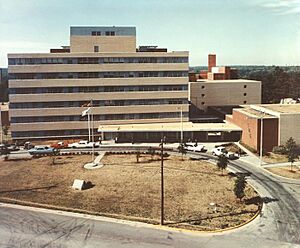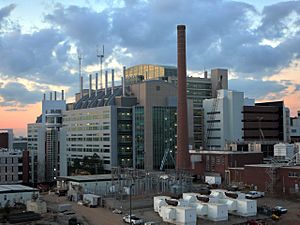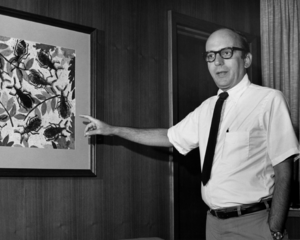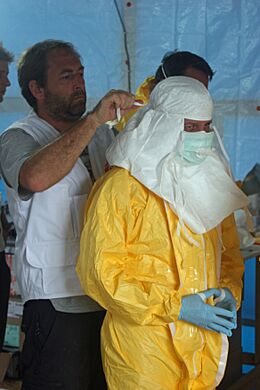Centers for Disease Control and Prevention facts for kids

Logo
|
|
| Agency overview | |
|---|---|
| Formed | July 1, 1946 |
| Preceding agencies |
|
| Jurisdiction | Federal government of the United States |
| Headquarters | Atlanta, Georgia, U.S. 33°47′58″N 84°19′42″W / 33.79944°N 84.32833°W |
| Employees | 10,899 (2015) |
| Annual budget | US$11.1 billion (FY18) |
| Agency executives |
|
| Parent agency | United States Department of Health and Human Services |
The Centers for Disease Control and Prevention (CDC) is the national public health agency of the United States. It is a United States federal agency under the Department of Health and Human Services, and is headquartered in Atlanta, Georgia.
The agency's main goal is the protection of public health and safety through the control and prevention of disease, injury, and disability in the US and worldwide. The CDC focuses national attention on developing and applying disease control and prevention. It especially focuses its attention on infectious disease, food borne pathogens, environmental health, occupational safety and health, health promotion, injury prevention, and educational activities designed to improve the health of United States citizens. The CDC also conducts research and provides information on non-infectious diseases, such as obesity and diabetes, and is a founding member of the International Association of National Public Health Institutes.
The CDC's current Director is Mandy Cohen who assumed office on July 10, 2023.
Contents
History
Establishment
The Communicable Disease Center was founded July 1, 1946, as the successor to the World War II Malaria Control in War Areas program of the Office of National Defense Malaria Control Activities.
Preceding its founding, organizations with global influence in malaria control were the Malaria Commission of the League of Nations and the Rockefeller Foundation. The Rockefeller Foundation greatly supported malaria control, sought to have the governments take over some of its efforts, and collaborated with the agency.
The new agency was a branch of the U.S. Public Health Service and Atlanta was chosen as the location because malaria was endemic in the Southern United States. The agency changed names (see infobox on top) before adopting the name Communicable Disease Center in 1946. Offices were located on the sixth floor of the Volunteer Building on Peachtree Street.
With a budget at the time of about $1 million, 59 percent of its personnel were engaged in mosquito abatement and habitat control with the objective of control and eradication of malaria in the United States (see National Malaria Eradication Program).
Among its 369 employees, the main jobs at CDC were originally entomology and engineering. In CDC's initial years, more than six and a half million homes were sprayed, mostly with DDT. In 1946, there were only seven medical officers on duty and an early organization chart was drawn. Under Joseph Walter Mountin, the CDC continued to be an advocate for public health issues and pushed to extend its responsibilities to many other communicable diseases.
In 1947, the CDC made a token payment of $10 to Emory University for 15 acres (61,000 m2) of land on Clifton Road in DeKalb County, still the home of CDC headquarters as of 2019. CDC employees collected the money to make the purchase. The benefactor behind the "gift" was Robert W. Woodruff, chairman of the board of The Coca-Cola Company. Woodruff had a long-time interest in malaria control, which had been a problem in areas where he went hunting. The same year, the PHS transferred its San Francisco based plague laboratory into the CDC as the Epidemiology Division, and a new Veterinary Diseases Division was established.
Growth
In 1951, Chief Epidemiologist Alexander Langmuir's warnings of potential biological warfare during the Korean War spurred the creation of the Epidemic Intelligence Service (EIS) as a two-year postgraduate training program in epidemiology. The success of the EIS program led to the launch of Field Epidemiology Training Programs (FETP) in 1980, training more than 18,000 disease detectives in over 80 countries. In 2020, FETP celebrated the 40th anniversary of the CDC's support for Thailand's Field Epidemiology Training Program. Thailand was the first FETP site created outside of North America and is found in numerous countries, reflecting CDC's influence in promoting this model internationally. The Training Programs in Epidemiology and Public Health Interventions Network (TEPHINET) has graduated 950 students.
In 1960, Tuberculosis Control was transferred to the CDC from the U.S. Public Health Service, and then in 1963 the Immunization program was established.
It became the National Communicable Disease Center effective July 1, 1967, and the Center for Disease Control on June 24, 1970. At the end of the Public Health Service reorganizations of 1966–1973, it was promoted to being a principal operating agency of PHS.
Recent history
It was renamed to the plural Centers for Disease Control effective October 14, 1980, as the modern organization of having multiple constituent centers was established. By 1990, it had four centers formed in the 1980s: the Center for Infectious Diseases, Center for Chronic Disease Prevention and Health Promotion, the Center for Environmental Health and Injury Control, and the Center for Prevention Services; as well as two centers that had been absorbed by CDC from outside: the National Institute for Occupational Safety and Health in 1973, and the National Center for Health Statistics in 1987.
An act of the United States Congress appended the words "and Prevention" to the name effective October 27, 1992. However, Congress directed that the initialism CDC be retained because of its name recognition. Since the 1990s, the CDC focus has broadened to include chronic diseases, disabilities, injury control, workplace hazards, environmental health threats, and terrorism preparedness. CDC combats emerging diseases and other health risks, including birth defects, West Nile virus, obesity, avian, swine, and pandemic flu, E. coli, and bioterrorism, to name a few. The organization would also prove to be an important factor in preventing the abuse of penicillin. In May 1994 the CDC admitted having sent samples of communicable diseases to the Iraqi government from 1984 through 1989 which were subsequently repurposed for biological warfare, including Botulinum toxin, West Nile virus, Yersinia pestis and Dengue fever virus.
On April 21, 2005, then–CDC Director Julie Gerberding formally announced the reorganization of CDC to "confront the challenges of 21st-century health threats". She established four Coordinating Centers. In 2009 the Obama Administration re-evaluated this change and ordered them cut as an unnecessary management layer.
As of 2013, the CDC's Biosafety Level 4 laboratories were among the few that exist in the world. They included one of only two official repositories of smallpox in the world, with the other one located at the State Research Center of Virology and Biotechnology VECTOR in the Russian Federation. In 2014, the CDC revealed they had discovered several misplaced smallpox samples while their lab workers were "potentially infected" with anthrax.
The city of Atlanta annexed the property of the CDC headquarters effective January 1, 2018, as a part of the city's largest annexation within a period of 65 years; the Atlanta City Council had voted to do so the prior December. The CDC and Emory University had requested that the Atlanta city government annex the area, paving the way for a MARTA expansion through the Emory campus, funded by city tax dollars. The headquarters were located in an unincorporated area, statistically in the Druid Hills census-designated place.
On August 17, 2022, Dr. Walensky said the CDC would make drastic changes in the wake of mistakes during the COVID-19 pandemic. She outlined an overhaul of how the CDC would analyze and share data and how they would communicate information to the general public. In her statement to all CDC employees, she said: "For 75 years, CDC and public health have been preparing for COVID-19, and in our big moment, our performance did not reliably meet expectations." Based on the findings of an internal report, Walensky concluded that "The CDC must refocus itself on public health needs, respond much faster to emergencies and outbreaks of disease, and provide information in a way that ordinary people and state and local health authorities can understand and put to use" (as summarized by the New York Times).
Organization
The CDC is organized into "Centers, Institutes, and Offices" (CIOs), with each organizational unit implementing the agency's activities in a particular area of expertise while also providing intra-agency support and resource-sharing for cross-cutting issues and specific health threats.
As of the most recent reorganization in February 2023, the CIOs are:
- Director
- National Center for Immunization and Respiratory Diseases
- National Center for Emerging and Zoonotic Infectious Diseases
- Division of Global Migration Health
- National Center for HIV/AIDS, Viral Hepatitis, STD, and TB Prevention
- National Center on Birth Defects and Developmental Disabilities
- National Center for Chronic Disease Prevention and Health Promotion
- National Center for Environmental Health / Agency for Toxic Substances and Disease Registry
- National Center for Injury Prevention and Control
- National Institute for Occupational Safety and Health
- Public Health Infrastructure Center
- Global Health Center
- Immediate Office of the Director
- Chief of Staff
- Office of the Chief Operating Officer
- Office of Policy, Performance, and Evaluation
- Office of Equal Employment Opportunity and Workplace Equity
- Office of Communications
- Office of Health Equity
- Office of Science
- CDC Washington Office
- Office of Laboratory Science and Safety
- Office of Readiness and Response
- Center for Forecasting and Outbreak Analytics
- Office of Public Health Data, Surveillance, and Technology
- National Center for Health Statistics
The Office of Public Health Preparedness was created during the 2001 anthrax attacks shortly after the terrorist attacks of September 11, 2001. Its purpose was to coordinate among the government the response to a range of biological terrorism threats.
Locations
Most CDC centers are located in Atlanta. Building 18, which opened in 2005 at the CDC's main Roybal campus (named in honor of the late Representative Edward R. Roybal), contains the premier BSL4 laboratory in the United States.
A few of the centers are based in or operate other domestic locations:
- The National Center for Health Statistics is primarily located in Hyattsville, Maryland, with a branch in Research Triangle Park in North Carolina.
- The National Institute for Occupational Safety and Health's primary locations are Cincinnati; Morgantown, West Virginia; Pittsburgh; Spokane, Washington; and Washington, D.C., with branches in Denver; Anchorage, Alaska; and Atlanta.
- The CDC Washington Office is based in Washington, D.C.
- Two divisions of the National Center for Emerging and Zoonotic Infectious Diseases are based outside Atlanta. The Division of Vector-Borne Diseases is based in Fort Collins, Colorado, with a branch in San Juan, Puerto Rico. The Arctic Investigations Program is based in Anchorage.
In addition, CDC operates quarantine facilities in 20 cities in the U.S.
Budget
CDC's budget for fiscal year 2018 was $11.9 billion; this decreased to $11.09 billion for fiscal year 2019. The CDC offers grants to help organizations advance health, safety and awareness at the community level in the United States. The CDC awards over 85 percent of its annual budget through these grants.
Workforce
As of 2021[update] CDC staff numbered approximately 15,000 personnel (including 6,000 contractors and 840 United States Public Health Service Commissioned Corps officers) in 170 occupations. Eighty percent held bachelor's degrees or higher; almost half had advanced degrees (a master's degree or a doctorate such as a PhD, D.O., or M.D.).
Common CDC job titles include engineer, entomologist, epidemiologist, biologist, physician, veterinarian, behavioral scientist, nurse, medical technologist, economist, public health advisor, health communicator, toxicologist, chemist, computer scientist, and statistician. The CDC also operates a number of notable training and fellowship programs, including those indicated below.
Epidemic Intelligence Service (EIS)
The Epidemic Intelligence Service (EIS) is composed of "boots-on-the-ground disease detectives" who investigate public health problems domestically and globally. When called upon by a governmental body, EIS officers may embark on short-term epidemiological assistance assignments, or "Epi-Aids", to provide technical expertise in containing and investigating disease outbreaks. The EIS program is a model for the international Field Epidemiology Training Program.
Public Health Associates Program
The CDC also operates the Public Health Associate Program (PHAP), a two-year paid fellowship for recent college graduates to work in public health agencies all over the United States. PHAP was founded in 2007 and currently has 159 associates in 34 states.
Leadership
The Director of CDC is a Senior Executive Service position that may be filled either by a career employee, or as a political appointment that does not require Senate confirmation, with the latter method typically being used. The director serves at the pleasure of the President and may be fired at any time. On January 20, 2025, the CDC Director position will change to require Senate confirmation, due to a provision in the Consolidated Appropriations Act, 2023. The CDC Director concurrently serves as the Administrator of the Agency for Toxic Substances and Disease Registry.
Twenty directors have served the CDC or its predecessor agencies, including three who have served during the Trump administration (including Anne Schuchat who twice served as acting director) and three who have served during the Carter administration (including one acting director not shown here). Two served under Bill Clinton, but only one under the Nixon to Ford terms.
| Portrait | Director | Took office | Left office |
|---|---|---|---|
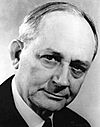 |
Louis L. Williams Jr. | 1942 | 1943 |
 |
Mark D. Hollis | 1944 | 1946 |
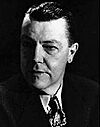 |
Raymond A. Vonderlehr | 1947 | 1951 |
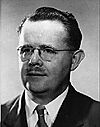 |
Justin M. Andrews | 1952 | 1953 |
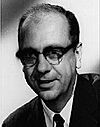 |
Theodore J. Bauer | 1953 | 1956 |
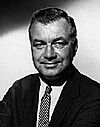 |
Robert J. Anderson | October 1, 1956 | June 30, 1960 |
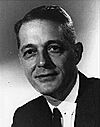 |
Clarence A. Smith | 1960 | 1962 |
 |
James L. Goddard | 1962 | January 1966 |
 |
David J. Sencer | 1966 | May 1977 |
 |
William H. Foege | May 1977 | 1983 |
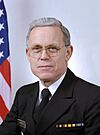 |
James O. Mason | 1983 | 1989 |
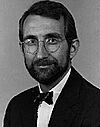 |
William L. Roper | March 1, 1990 | June 30, 1993 |
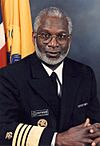 |
David Satcher | 1993 | February 13, 1998 |
 |
Jeffrey P. Koplan | October 5, 1998 | March 31, 2002 |
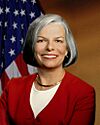 |
Julie Gerberding | June 3, 2002 | January 20, 2009 |
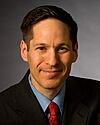 |
Thomas R. Frieden | June 8, 2009 | January 20, 2017 |
 |
Anne Schuchat (acting) | January 20, 2017 | July 7, 2017 |
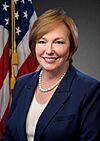 |
Brenda Fitzgerald | July 7, 2017 | January 31, 2018 |
 |
Anne Schuchat (acting) | January 31, 2018 | March 26, 2018 |
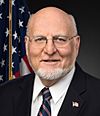 |
Robert R. Redfield | March 26, 2018 | January 20, 2021 |
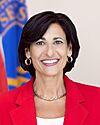 |
Rochelle Walensky | January 20, 2021 | June 30, 2023 |
 |
Nirav D. Shah (acting) | July 1, 2023 | July 10, 2023 |
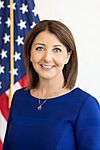 |
Mandy Cohen | July 10, 2023 | Present |
Datasets and survey systems
- CDC Scientific Data, Surveillance, Health Statistics, and Laboratory Information.
- Behavioral Risk Factor Surveillance System (BRFSS), the world's largest, ongoing telephone health-survey system.
- Pregnancy Risk Assessment Monitoring System (PRAMS), a surveillance system on maternal and infant health with telephone and mail questionnaires in English and Spanish in 50 US jurisdictions.
- Mortality Medical Data System.
- CDC WONDER (Wide-ranging ONline Data for Epidemiologic Research)
- Data systems of the National Center for Health Statistics
Areas of focus
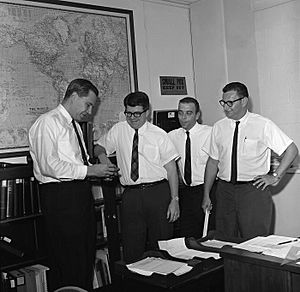
Communicable diseases
The CDC's programs address more than 400 diseases, health threats, and conditions that are major causes of death, disease, and disability. The CDC's website has information on various infectious (and noninfectious) diseases, including smallpox, measles, and others.
Influenza
The CDC targets the transmission of influenza, including the H1N1 swine flu, and launched websites to educate people about hygiene.
Division of Select Agents and Toxins
Within the division are two programs: the Federal Select Agent Program (FSAP) and the Import Permit Program. The FSAP is run jointly with an office within the U.S. Department of Agriculture, regulating agents that can cause disease in humans, animals, and plants. The Import Permit Program regulates the importation of "infectious biological materials."
The CDC runs a program that protects the public from rare and dangerous substances such as anthrax and the Ebola virus. The program, called the Federal Select Agent Program, calls for inspections of labs in the U.S. that work with dangerous pathogens.
During the 2014 Ebola outbreak in West Africa, the CDC helped coordinate the return of two infected American aid workers for treatment at Emory University Hospital, the home of a special unit to handle highly infectious diseases.
As a response to the 2014 Ebola outbreak, Congress passed a Continuing Appropriations Resolution allocating $30,000,000 towards CDC's efforts to fight the virus.
Non-communicable diseases
The CDC also works on non-communicable diseases, including chronic diseases caused by obesity, physical inactivity and tobacco-use. The work of the Division for Cancer Prevention and Control, led from 2010 by Lisa C. Richardson, is also within this remit.
Antibiotic resistance
The CDC implemented their National Action Plan for Combating Antibiotic Resistant Bacteria as a measure against the spread of antibiotic resistance in the United States. This initiative has a budget of $161 million and includes the development of the Antibiotic Resistance Lab Network.
Global health
Globally, the CDC works with other organizations to address global health challenges and contain disease threats at their source. They work with many international organizations such as the World Health Organization (WHO) as well as ministries of health and other groups on the front lines of outbreaks. The agency maintains staff in more than 60 countries, including some from the U.S. but more from the countries in which they operate. The agency's global divisions include the Division of Global HIV and TB (DGHT), the Division of Parasitic Diseases and Malaria (DPDM), the Division of Global Health Protection (DGHP), and the Global Immunization Division (GID).
The CDC has been working with the WHO to implement the International Health Regulations (IHR), an agreement between 196 countries to prevent, control, and report on the international spread of disease, through initiatives including the Global Disease Detection Program (GDD).
The CDC has also been involved in implementing the U.S. global health initiatives President's Emergency Plan for AIDS Relief (PEPFAR) and President's Malaria Initiative.
Travelers' health
The CDC collects and publishes health information for travelers in a comprehensive book, CDC Health Information for International Travel, which is commonly known as the "yellow book." The book is available online and in print as a new edition every other year and includes current travel health guidelines, vaccine recommendations, and information on specific travel destinations. The CDC also issues travel health notices on its website, consisting of three levels:
- "Watch": Level 1 (practice usual precautions)
- "Alert": Level 2 (practice enhanced precautions)
- "Warning": Level 3 (avoid nonessential travel)
Vaccine safety
The CDC uses a number of tools to monitor the safety of vaccines. The Vaccine Adverse Event Reporting System (VAERS), a national vaccine safety surveillance program run by CDC and the FDA. "VAERS detects possible safety issues with U.S. vaccines by collecting information about adverse events (possible side effects or health problems) after vaccination." The CDC's Safety Information by Vaccine page provides a list of the latest safety information, side effects, and answers to common questions about CDC recommended vaccines.
The Vaccine Safety Datalink (VSD) works with a network of healthcare organizations to share data on vaccine safety and adverse events. The Clinical Immunization Safety Assessment (CISA) project is a network of vaccine experts and health centers that research and assist the CDC in the area of vaccine safety.
CDC also runs a program called V-safe, a smartphone web application that allows COVID-19 vaccine recipients to be surveyed in detail about their health in response to getting the shot.
CDC Foundation
The CDC Foundation operates independently from CDC as a private, nonprofit 501(c)(3) organization incorporated in the State of Georgia. The creation of the Foundation was authorized by section 399F of the Public Health Service Act to support the mission of CDC in partnership with the private sector, including organizations, foundations, businesses, educational groups, and individuals. From 1995 to 2022, the Foundation raised over $1.6 billion and launched more than 1,200 health programs. Bill Cosby formerly served as a member of the Foundation's Board of Directors, continuing as an honorary member after completing his term.
Activities
The Foundation engages in research projects and health programs in more than 160 countries every year, including in focus areas such as cardiovascular disease, cancer, emergency response, and infectious diseases, particularly HIV/AIDS, Ebola, rotavirus, and COVID-19.
- EmPOWERED Health Program: Launched in November 2019 with funding from Amgen, the program works to empower cancer patients to become actively involved in the decision making around their treatments.
- Fries Prize for Improving Health: An annual prize first awarded in 1992 that "recognizes an individual who has made major accomplishments in health improvement and with the general criteria of the greatest good for the greatest number".
See also
 In Spanish: Centros para el Control y Prevención de Enfermedades para niños
In Spanish: Centros para el Control y Prevención de Enfermedades para niños
- U.S. Consumer Product Safety Commission
- Haddon Matrix
- Safe Kids Worldwide
- List of national public health agencies
- National Highway Traffic Safety Administration


